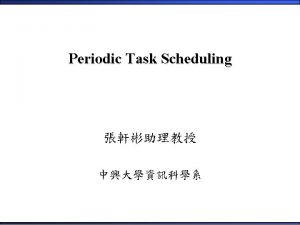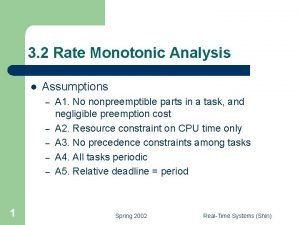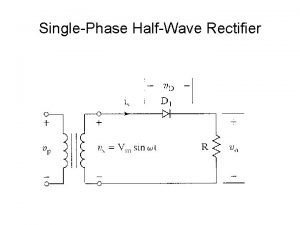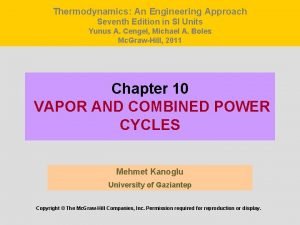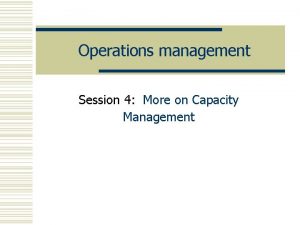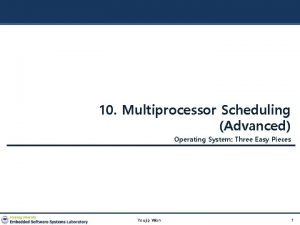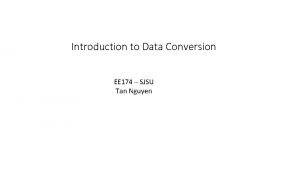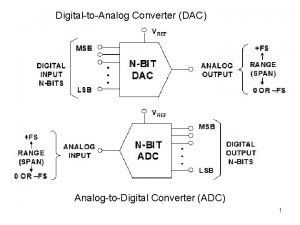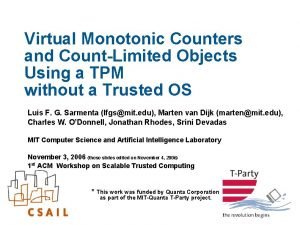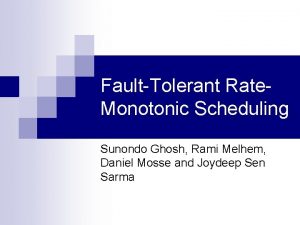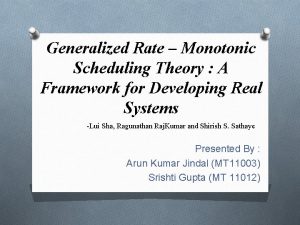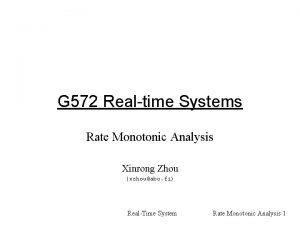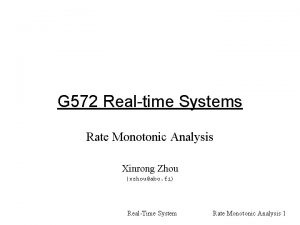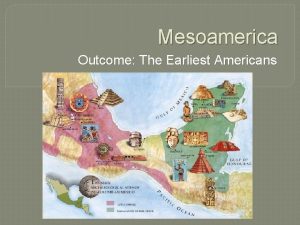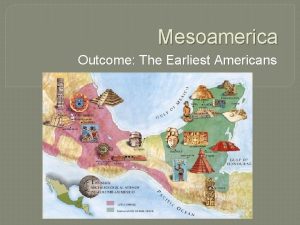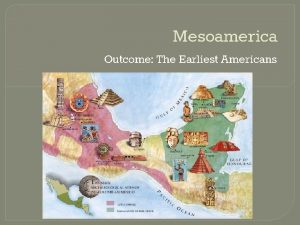Outline Processor Utilization Factor Rate Monotonic Scheduling Earliest














- Slides: 14


Outline • Processor Utilization Factor • Rate Monotonic Scheduling • Earliest Deadline First 2 嵌入式即時作業系統

Processor Utilization Factor • Given a set T of n periodic tasks, processor utilization factor U is the fraction of processor time spent in the execution of a task set • There exists a maximum value of U below which T is schedulable and above with T is not schedulable – Depend on the task set and used scheduling algorithm • Let Uub(T, A) denote the upper bound of the processor utilization factor for a task set T under a give algorithm A – If U = Uub(T, A), the set T is said to fully utilize the processor 3 嵌入式即時作業系統

Processor Utilization Factor (Cont. ) • For a given algorithm A, the least upper bound Ulub(A) of the processor utilization factor is the minimum of the utilization factors over all task sets that fully utilize the processor Uub 1 T 1 Uub 2 T 2 Uub 3 T 4 Tm 嵌入式即時作業系統 Uub 4 Uubm 0 Ulub 1 U 4

Processor Utilization Factor (Cont. ) • Ulub(A) defines an important characteristics of a real-time scheduling algorithm. – It allow to easily verify the schedulability of a task set. • If a task set whose processor utilization factor is below Ulub(A), then it is schedulable by the algorithm A. • In contrast, if a task set’s processor utilization factor is above Ulub(A), it may or may not be schedulable by the algorithm A 5 嵌入式即時作業系統

Rate Monotonic Scheduling • Task model: – Periodic tasks – Arbitrary arrival times – Different computation time and deadlines – Preemptive 6 嵌入式即時作業系統

Rate Monotonic Scheduling (Cont. ) • Rate Monotonic (RM) – Assign priorities to tasks according to their request rates • Tasks with higher request rates, i. e. , shorter periods, have higher priorities – Fixed-priority scheduling algorithm • Priority are assigned to tasks before execution and do not change over time – Intrinsically preemptive • The currently executing task is preempted by a newly arrived task with shorter period 7 嵌入式即時作業系統

Rate Monotonic Scheduling (Cont. ) • Optimality: RM is optimal among all fixed-priority scheduling algorithms – No other fixed-priority algorithm can schedule a task set that cannot be scheduled by RM • Schedulability condition: given n tasks, the least upper bound of the processor utilization factor under RM is n 1 2 3 4 5 6 7 8 9 10 Ulub 1. 000 0. 828 0. 780 0. 757 0. 743 0. 735 0. 729 0. 724 0. 721 0. 718 8 嵌入式即時作業系統

Rate Monotonic Scheduling (Cont. ) • Concluding remarks – The schedulability condition is sufficient to guarantee the feasibility of any task set, but it is not necessary – Thus, if a task set has an utilization factor greater than Ulub and less than one, nothing can be said on the feasibility of the task set 9 嵌入式即時作業系統

Earliest Deadline First • Earliest Deadline First (EDF) – Selects tasks according to their (absolute) deadlines • Tasks with earlier deadlines will be executed at higher priority – Dynamic scheduling algorithm • The absolute deadline of a periodic task depends on the current ith instances • Thus, EDF is a dynamic priority assignment – Intrinsically preemptive • The current executing task is preempted whenever another periodic instance with earlier deadline become active 10 嵌入式即時作業系統

Earliest Deadline First (Cont. ) • Optimality: – EDF is optimal among all dynamic-priority scheduling algorithms • Schedulability analysis – A set of periodic tasks is schedulable with EDF if and only if 11 嵌入式即時作業系統

Example • Two tasks: – Task 1: execution time: 2, period: 5 – Task 2: execution time: 4, period: 7 • Processor utilization factor – U = 2/5 + 4/7 = 0. 97 – U > Ulcb of RM • RM cannot guarantee schedulability – U < Ulcb(=1) of EDF • EDP thus guarantee schedulability 12 嵌入式即時作業系統

Example RM T 1 0 5 10 15 time overflow 20 25 30 35 T 2 0 7 14 21 28 35 EDF T 1 0 5 10 15 20 25 30 35 T 2 0 7 14 21 28 35 13 嵌入式即時作業系統

Reference • Giorgio C. Buttazzo, “Hard Real-Time Computing Systems: Predictable Scheduling Algorithms and Applications, ” Kluwer Academic Publishers, 1997 • Jane W. S. Liu, “Real-Time Systems, ” Prentice Hall, 2002 14 嵌入式即時作業系統
 Transformer utilization factor
Transformer utilization factor Rate monotonic analysis
Rate monotonic analysis Types of rectifier
Types of rectifier Plant utilization factor
Plant utilization factor Isolux diagram for finding luminance on road surface is
Isolux diagram for finding luminance on road surface is Capacity utilization rate formula
Capacity utilization rate formula Utilization rate operations management
Utilization rate operations management Advanced operating system
Advanced operating system Monotonic reads
Monotonic reads U(x1 x2)=x1^2+x2^2
U(x1 x2)=x1^2+x2^2 Non-monotonic
Non-monotonic Adc inl dnl calculation
Adc inl dnl calculation Monotonic counter
Monotonic counter Cross tile
Cross tile Job scheduling vs process scheduling
Job scheduling vs process scheduling
